
27 minute read
Laser Guided ATGM successfully test-fired
Laser Guided Anti Tank Guided Missile (ATGM) was successfully test fired from MBT Arjun Tank at KK Ranges, Armoured Corps Centre and School (ACC&S) Ahmednagar. In these tests, the ATGM successfully defeated a target located at 3 km. Laser Defence Minister Rajnath Singh.
The inauguration was done virtually in the presence of Minister of State for Defence Shripad Naik, Secretary Defence Dr. Ajay Kumar, Secretary Defence (Production) Rajkumar.
Advertisement
Inaugurating the Centre, Rajnath Singh said, “We are celebrating the ‘Atmanirbhar’ week to focus on modernisation of defence infrastructure, creation of new manufacturing capability and investments in the guided ATGMs lock and track the targets with the help of laser designation to ensure precision hit accuracy.
The missile employs a tandem HEAT warhead to defeat Explosive Reactive Armour (ERA) protected armoured vehicles. It has been developed with sector. BEML’s Industrial Design Centre will propel innovative thinking for the future in this regard.”
The Design centre will focus at implementing Industrial Design & Human Factors in all BEML Products as a part of developmental strategies for setting the global benchmarking of Industrial Design and Ergonomics. It will be integrated with R&D and manufacturing and will be a hub for exchange of creative ideas and concepts and will provide the ‘Design-edge’ for better Market & User acceptance.
The Designers, qualified from leading multiple platform launch capability and is currently undergoing technical evaluation trials from gun of MBT Arjun.
Armament Research & Development Establishment (ARDE) Pune in association with High Energy Materials Research Laboratory (HEMRL) Pune, and Instruments Research & Development Establishment (IRDE) Dehradun have developed the missile.
Defence Minister Rajnath Singh congratulated DRDO for the successfully test firing of the Laser Guided Anti Tank Guided Missile from MBT Arjun at KK Ranges.
Secretary DDR&D & Chairman DRDO congratulated DRDO personnel and
BEML’s Industrial Design Centre (IDC), located at its Bangalore Complex was inaugurated by
industry on the successful test firing. national level Institutes such as NID and IIT, at IDC have carried out a global benchmarking study by means of various research. These will mainly focus on enhancing the look and feel of BEML Products, Operators’ ease of work and comfort as per global standards. It will harness the latest technologies like AI and Gesture Recognition and engineering resources for self-reliance, while being sensitive towards ‘Eco’, ‘Green’ & ‘Sustainability’.
The manufacturing implementations of these strategies will be made possible with the in-house capabilities available with BEML, as well as through the company’s network of MSMEs.
Dr. D. K.Hota, CMD, BEML said, “BEML is a highly diversified company and we have invested in developing inhouse capabilities of Industrial Design & Human Factors, Engineering & IPs. This will address the ‘design’ facet of products - presently dependent on foreign facilities and move us towards self-reliant on product design in pursuit of ‘AtmaNirbhar Bharat’.”

GRSE delivered FPV “ICGS Kanaklata Barua” to Indian Coast Guard
“ICGS Kanaklata Barua”, the vessel built by GRSE in the series of five Fast Patrol Vessels for the Indian Coast was o Coast Guard taking the record delivery count of the organization to 105 warships.
The Fast Patrol Vessel (FPV), ICGS Kanaklata Barua was commissioned at GRSE FOJ Unit through video conferencing mode by Jiwesh Nandan, Additional Secretary, MoD. Rear Admiral VK Saxena, IN(Retd), Chairman & Managing Director, GRSE, Cmde. Sanjeev Nayyar, IN (Retd), Director (Shipbuilding), Cmde. P R Hari, IN (Retd), Director (Personnel), R.K Dash, Director (Finance) and other senior officials of GRSE and Indian Coast Guard attended the ceremony.
The FPVs are medium-range surface vessels with a length of 50 m, a width of 7.5 m and displacement of around 308 T and are proficient at operating in the maritime zones of India. These powerful, fuel-efficient platforms are designed to perform multipurpose operations like patrolling, anti-smuggling, antipoaching, and rescue operations. The vessels are designed for a maximum speed of 34 knots with an endurance of more than 1,500 nautical miles. It is equipped with 03 main engines of MTU make and built up at GRSE with advanced control systems, ‘Water Jet’ units and an ‘Integrated Bridge System’ integrating all communication and navigation systems. The ship is also fitted with 40/60 gun as the main armament and will also have improved habitability features with fully airconditioned modular accommodation for 35 personnel. The entire design of these FPVs has been developed InHouse by GRSE as per requirements specified by the Indian Coast Guard.
Over the years, GRSE has established capabilities for In-House Design and Shipbuilding and has made significant contributions to the Indigenous Warship construction program in India. The Design R&D Unit of GRSE has been recognized for its competence by Dept. of Scientific & Industrial Research (DSIR), Ministry of Science & Technology, and Govt. of India.
Celebrating the “Atmanirbhar Bharat Abhiyaan”, a State-of-the-Art Modern Hull Block Complex and Indigenous Underwater CNC Plasma Cutting Facility was virtually inaugurated by Hon’ble Raksha Mantri Shri. Rajnath Singh at the Rajabagan Dockyard Unit of GRSE, to augment the existing infrastructure at the Main Unit of the Shipyard.
GRSE enjoys a deep pool of revenue-generating projects with its order book position of Rs. 26,544 crore as on 31 Mar 2020.
GRSE strategies revolve around shifting to smart manufacturing (Industry 4.0), with marked innovations in automation, robotics and the industrial internet of things. Introducing Artificial Intelligence, Machine Learning, Interoperability and secured connectivity enabling real time monitoring, control and optimization of processes, resources and systems shall enable workload consolidation across Design, Production & Supply Chain Management, significantly in the future.
GRSE continues to strive towards Atmanirbharta or self-sufficiency in all its future projects, focused on its core verticals of Shipbuilding, Engineering and Engine Production.


Technion and IAI Co-Develop New Satellite Technology for Search, Rescue, and Signal Detection Missions
The collaboration yielded an innovative electronic receiver and satellite computer for the ADELIS-SAMSON Project; Three nano-satellites are to perform autonomous formation flight
Aclose technological and research collaboration between the Technion - Israel Institute of Technology and Israel Aerospace Industries (IAI) has yielded an advanced electronic receiver that constitutes a unique development in the nano-satellite category. The collaboration was part of Technion’s " ADELIS-SAMSON" project, in which three nano-satellites will be launched into space in December. The three satellites, which will fly in an autonomous formation without human intervention, are tasked with receiving signals from Earth and detecting their precise location for search and rescue, remote sensing, and environmental monitoring missions. The software and algorithms that control the flight were developed at Technion’s Distributed Space Systems Lab in the Asher Space Research Institute.
The electronic receiver, developed and built especially for the " ADELISSAMSON" project by ELTA Systems, an IAI division and subsidiary, picks-up, identifies, and records signals from Earth. It comprises an information processing system that calculates the location of the transmission. The miniature system was developed particularly for nano-satellites in order to extend the scope of the missions they can perform. The system integrates with the three mission computers developed by IAI’s MABAT Division.
The " ADELIS-SAMSON" project is headed by Professor Pini Gurfil, head of the Asher Space Research Institute and a faculty member in Technion Faculty of Aerospace Engineering and with the support of the ADELIS Foundation and the Israel Space Agency in the Ministry of Science and Technology
“We worked closely with IAI engineers on this development for more than five years,” said Prof. Gurfil. “The project showcases the benefits of academyindustry collaboration, which yielded an outstanding result in the form of an innovative space-borne system. We thank IAI engineers for their professionalism and commitment. The system we codeveloped places ADELIS-SAMSON at the forefront of nano-satellite technology.”
IAI CEO, Nimrod Sheffer, said, “The new development will help promote a new space research area. Collaboration with the Technion and other academic institutions is invaluable to us, as it promotes academic research and our future technological ventures. The receiver developed for this project offers a new way for space geolocation of ground electromagnetic signals. It is based on IAI’s extensive engineering know-how and experience in satellites, electronic warfare, intelligence interpretation systems, and communication networks.”
Asher Space Research Institute researchers who worked with IAI’s engineers in the project included Avner Kaidar, Hovik Agalarian, Eviatar Edlerman, Dr. Alex Frid and Prof. Pini Gurfil.
The ADELIS-SAMSON project is supported by the ADELIS Foundation, the Goldstein Foundation, and Israel's Space Agency. Other parties involved in the project include Israel's Space Agency, RAFAEL, and IAI.
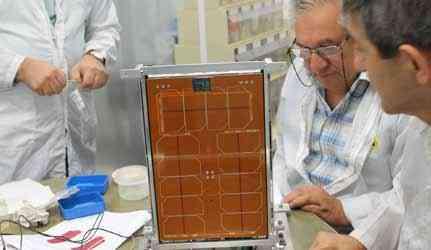
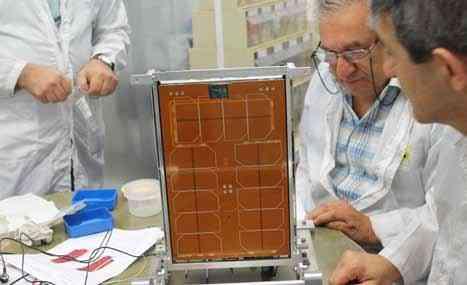

Rohde & Schwarz offers Portfolio for Precise AESA Testing
In order to reduce complexity, costs and efforts for TRM testing, Rohde & Schwarz concentrates on test and measurement solutions to maximize the performance of AESA designs with highest precision instruments and automation of complex test scenarios.
Modern active electronically scanned array (AESA) radars are a strong focal point of the global aerospace and defense industry. The performance of state-of-the-art AESA radar systems depends strongly on the performance of the individual transmit-receivemodule (TRM) assembled in the antenna array. Rohde & Schwarz offers new test and measurement solutions for TRM performance validation, enabling the customer to maximize their radar system capabilities.
Saudi International Airshow 2021, to be held February 16th to 18th in Riyadh, announced the inaugural participation of the Women in Aviation Middle East Chapter, a non-
Typical TRM test cases can be covered with a single Rohde & Schwarz network analyzer as a turnkey solution, such as the R&S ZNA. If higher performance such as the pulsed noise figure is required, the R&S FSW signal and spectrum analyzer is added to the setup. When combined with the integrated calibration routine, this simplifies the setup, ensuring full accuracy and high repeatability. Users benefit from reduced test procedure complexity and a minimized cabling assembly.
The support of multiport calibration units enables the efficient calibration of devices under test (DUTs) with many ports. This combination of a simplified test setup with a high degree of automation ensures reliable and reproducible measurements by a scalable solution. It offers a variety of use cases, from manual testing of components to complete module characterization in development and to automated production testing.
As time is of the essence, Rohde & Schwarz has developed solutions which reduce the number of parallel running systems during production by their profit association dedicated to providing opportunities to women striving for careers in the aviation industry.
Launched in the UAE, this Chapter shines a light on female role models in the Middle East to demonstrate the many opportunities for women in the aviation sector. It is fueled by the possibilities of supporting current and future generations of women to achieve their goals and ambitions as they work side by side with men in the industry.
Saudi International Airshow forms part of the Vision 2030 program as the aviation sector continues to play an essential role in the diversification and expansion of the Saudi economy. efficiency. The R&S TS6 TRM test library, together with the R&S TS6710 TRM radar test system, deliver the fastest possible speeds for TRM testing, in combination with a fast handover between measurement and device programming. A typical test time for a complete TRM characterization can be reduced from hours, required by the legacy TRM test systems, to only a few minutes.
The parameters of TRM designs are radar specific and are considered confidential. Each TRM must be controlled by a specific interface, protocol, and trigger for testing. The R&S TS6 TRM test library has an open software interface for TRM control, which makes it possible that the whole test configuration can be carried 1/2 out locally. This also allows faster onsite adaptations and optimizations. An efficient option is the R&S Compact TSVP test system versatile platform with flexible and fast control interfaces, plus digital and analog measurements. This configuration enables very short test times in setups, without any field-programmable

Saudi International Airshow welcomes Women in Aviation for the first time
gate array (FPGA) programming. Since the Kingdom of Saudi Arabia has also included women’s rights in Vision 2030, exhibiting companies are supporting women and making more jobs available in aviation.
WAI-ME aims to bring together women working in all areas of aviation across the Middle East to inspire and encourage future generations of women to consider a fulfilling career in aviation, and is committed to ensuring its vision, mission and goals are comprehensively realized.


DRDO transfers AHSP of Pinaka Weapon System to DGQA
Authority Holding Sealed Particulars (AHSP) responsibility of Pinaka weapon system was handed over to DGQA by DRDO. AHSP transfer marks successful establishment of production of Pinaka rockets, Launchers, Battery Command Posts, Loader Cum Replenishment and Replenishment Vehicles as well as successful establishment of Quality Assurance processes. AHSP handing over took place at ARDE, Pune wherein the documentation required by various Production agencies, Quality Assurance agencies, Maintenance agencies and Users were formally handed over by ARDE, HEMRL and VRDE to CQA (A).
Pinaka is a free flight artillery rocket system having a range of 37.5 km. Pinaka rockets are launched from a multi barrel rocket launcher which has capability to launch salvo of 12 rockets in 44 seconds. The weapon system is designed and developed by Pune based DRDO lab, Armament Research & Development Establishment (ARDE) in association with HEMRL, VRDE and CAIR. Pinaka rockets and its ground systems are currently under bulk production at Ordnance Factories, BEML, BEL, Tata Power and L&T Defence.
Joining the event by video conferencing Dr G Satheesh Reddy, Secretary DD R&D and Chairman DRDO described the AHSP transfer as a landmark event in the development of Pinaka Rocket Systems and stated that the Pinaka Rocket Systems will go a long way in fulfilling the requirement of services.
Lt Gen Sanjay Chauhan, Director General of DGQA, CS Vishwakarma, Chairman OFB, Lt Gen K Ravi Prasad, VSM and Director General of Artillery, PK Mehta, Director General of Armament & Combat Engineering Cluster joined the event through video conferencing. Dr V Venkateswara Rao, Director ARDE, KPS Murthy, Director HEMRL, Shri Sangam Sinha, Director VRDE, AV Shinde, Officiating Controller CQA (A) and MGP Dhanraj, DDG, Officiating Controller CQA (ME) were present for the event at ARDE.
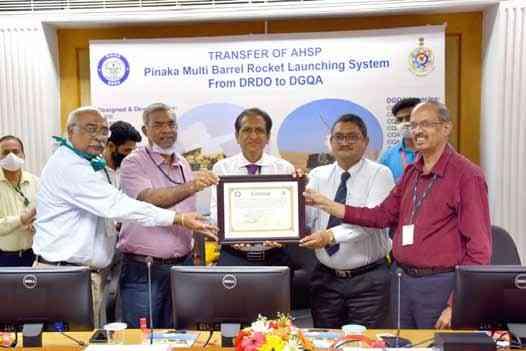

WFEL Receives MoD Armed Forces Covenant Silver Award
Military bridging supplier, WFEL, has been awarded the coveted Defence Employer Recognition Scheme (ERS) Silver Award, which acknowledges employers who have signed up to the Armed Forces Covenant and provided exceptional support to the armed forces community and defence by going above and beyond their Covenant pledges.
To achieve a Silver Award, employers need to have achieved the Bronze Award level and to have shown flexibility towards the annual training commitments and deployment of Reservists, whilst also supporting the employment of cadet force adult volunteers, service leavers, and military spouses and partners.
Ian Anderton, Managing Director of WFEL, said, “We are absolutely delighted to receive this Silver Award. Our decision to sign the Armed Forces Covenant was a visible and very real demonstration of our continuing commitment to supporting the Armed Forces.
“We recognise that employing military trained personnel is highly beneficial to our business and we value the skills and qualities that veterans, reservists or ex-military personnel bring to the company. We are committed to continuing to employ and support individuals with an Armed Forces background and are very proud to uphold our Armed Forces Covenant.”
WFEL counts amongst its employees a number of Reservists and Veterans and supports activities on behalf of the armed forces community. WFEL signed up to the Armed Forces Covenant in late 2018, and subsequently received the Bronze Award in 2019.
WFEL’s support of Reservists - by offering the flexibility needed to plan and fulfil their annual training and mobilisation commitments - came to the fore recently during the COVID-19 crisis when a number of North West Reservists were on standby for deployment to provide support to the NHS.
The Employer Recognition Award scheme recognises the different levels of commitment provided by employers and allows the Ministry of Defence to publicly thank and honour those organisations for their support. Launched in 2014 by the Prime Minister, the prestigious initiative was created to recognise and reward UK employers for their support and commitment to Defence.
Johnny Mercer, Minister for Defence People and Veterans, said, “I am grateful for the positive attitude and flexible policies organisations have adopted towards the defence community, which is testament to the fantastic contribution our serving personnel, veterans and their families can make to any organisation.”
With over a century of engineering expertise and innovation - and already renowned as an established world leader in rapidly deployable military bridging, having supplied over 600 bridging systems to 43 armed forces worldwide for over four decades - WFEL offers concept design, prototype manufacture and full-scale production of a range of military-grade engineering solutions across the complete spectrum of the defence sector, including vehicle integration and aviation products.
WFEL’s range of mobile bridging systems - including the well-known Medium Girder Bridge and the Dry Support Bridge - provide unrestricted manoeuvre capability and interoperability, can be deployed in minutes and have been used by coalition forces on operations worldwide and in civilian aid operations in disaster zones around the world, being in service with the British Army, U.S. Army and many other NATO forces.
WFEL recently announced it will have significant involvement in the production of the Boxer Mechanised Infantry Vehicle for the British Army’s £2.3bn contract.
Collins Aerospace to Deliver Higher Resolution, Longer-Range Capabilities on U.S. Navy Maritime Experimental Flights With Ms-177A ISR Sensor
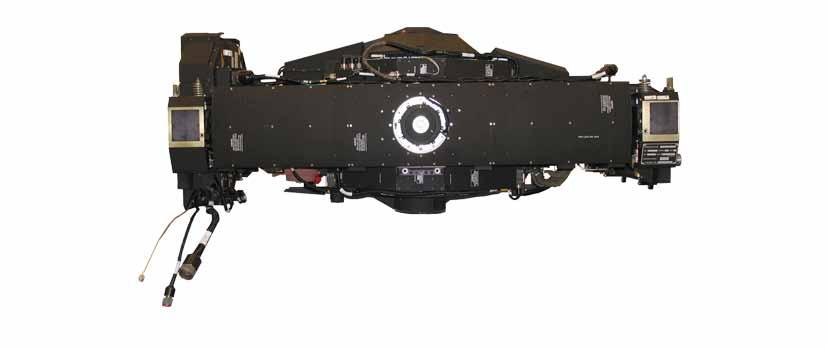
Sensor to be installed onboard flight test P-3C Orion aircraft under ONR contract Experiment will mark the first time Collins Aerospace’s MS-177A has been flown by the Navy Sensor provides better spectral and spatial image resolution at longer ranges and greater coverage area per hour than other airborne ISR sensors in the U.S. Navy inventory, expanding ASW, ASuW and MIW mission capabilities.
Collins Aerospace Systems, a unit of Raytheon Technologies Corporation has been awarded a $19.9 million contract by the U.S. Navy’s Office of Naval Research (ONR) to conduct a maritime experiment of the company’s MS-177A longrange multi-spectral imaging sensor on a Navy flight test P-3C Orion aircraft. The experiment will mark the first time Collins Aerospace’s MS-177A has been flown by the Navy. The previous version of the sensor, the MS-177, has completed flight testing on the U.S. Air Force (USAF) Global Hawk and will soon go operational.
Over the course of the 30-month contract period, Collins Aerospace will fabricate an MS-177A sensor and supporting flight test hardware from its existing USAF production line and install it on the P-3C aircraft. The follow-on phase will encompass experimental flights in a maritime threat environment. Results of the experiment will demonstrate the MS-177A’s ability to expand the Navy’s maritime ISR capabilities in the AntiSubmarine Warfare (ASW), Anti-Surface Warfare (ASuW) and Mine Warfare (MIW) mission domains using a mature USAF sensor system.
“When used in conjunction with other spectrum sensors, our proven MS-177 family of systems can greatly increase the probability of detection for threats, while operating in both permissive and contested environments,” said Kevin Raftery, vice president and general manager, ISR and Space Solutions for Collins Aerospace.
The MS-177A system employs design elements of Collins Aerospace’s fielded Senior Year Electro-optical Reconnaissance System (SYERS) sensor flown on the U-2 to deliver high geolocation accuracy, collecting imagery in the Visible, Near-IR, SWIR and MWIR spectral channels resulting in advanced terrestrial and maritime mission capabilities. The MS-177A sensor’s Field of View (FoV) and spectral and spatial resolution offer unmatched highresolution, multi-spectral, high coverage rate airborne intelligence, surveillance and reconnaissance (ISR) capability to the U.S. military. Its long-range performance allows the host platform to operate in contested as well as permissive environments on both land and sea, day or night.
DSEI 2021: UK MOD to focus on the Integrated Response to Future Threats
DSEI 2021 will put integration in the spotlight as the UK Ministry of Defence and the British Army, Royal Navy, Royal Air Force and UK Strategic Command work to develop and maintain organic integration at all levels and across all domains.
As British forces modernise to meet the demands of the information age, they do so with the understanding that success on the future battlefield requires integration across land, sea, air, cyber and space. Under the theme of ‘Integrated Response to Future Threats’ DSEI 2021 will be shaped to support this strategic shift with input from industry, academia, international partners and delegates.
With the newly formed Strategic Command leading ambitious plans to deliver a step-change in the way British commands interoperate, UK Defence is driving integration efforts to mesh the way individual armed services operate in the battlespace. Winning the fight no longer depends on success in the air, land or sea; it requires a force that is integrated by design and instinct, that uses defence resources efficiently across multiple domains at an optimum pace to stay ahead of threats and adversaries.
On the industry side, this

will require an accelerated pace of change to deliver a competitive advantage. It will see increased demand for the disruptive application of technologies such as artificial intelligence and big data in the cyber domain, increased focus on defeating adversaries in the ‘grey zone’ through special operations, and support for improved decision making aided by data analytics and information technologies.
The focus on integration has been highlighted by the immense global impact of COVID-19 , and the enforced understanding that robust national resilience relies on more than fire power. With our adversaries increasingly posing non-military threats, greater instinctive integration is required at all levels of the defence community to ensure the UK remains ahead of the challenges that lie ahead.
DSEI 2021 will offer a forum for Defence UK to meet with its industry partners to strengthen relationships,

share knowledge, and discuss the technological innovations that will support the British forces in these efforts as they look toward 2030 and beyond, powering progress and defining the future of defence.
Minister for Defence Procurement, Jeremy Quin MP, commented: “Once again, DSEI is showcasing the best of British defence technology and innovation on a world stage. Bringing together strategic partners, international governments and pioneering defence companies this show offers a unique opportunity to collaborate, partner and cooperate to further our collective global defence and security agenda.”
“DSEI 2021 falls during a time of great change for the British forces as they implement their heightened integration doctrine, both internally and externally with the wider UK defence landscape,” Grant Burgham, DSEI Event Director, Clarion Defence & Security, commented. “DSEI offers the single best opportunity to foster that integration between Defence UK and industry partners. Our exhibitors are keen to meet with all branches of the British Commands and show their capabilities in support of ‘Integrated Response to Future Threats’ at DSEI 2021.”
DSEI connects governments, national armed forces, industry thought leaders and the entire defence & security supply chain on a global scale. With a range of valuable opportunities for networking, a platform for business, access to relevant content & live-action demonstrations, the DSEI community can strengthen relationships, share knowledge and engage in the latest capabilities across the exhibition’s Aerospace, Land, Naval, Security & Joint Zones. DSEI is a biennial event held in London and will take place from 14-17 September 2021.
Government to Promote Domestic Defence Manufacturing with Major Initiatives
The defence ministry has taken the following policy initiatives under ‘Make in India’ to promote defence manufacturing in the country.
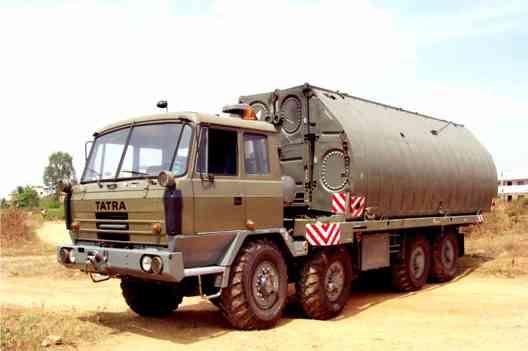
Ministry of Defence has prepared a ‘Negative list’ of 101 items for which there would be an embargo on the import beyond the timeline indicated against them. This is a big step towards self-reliance in defence. It also offers a great opportunity to the Indian defence industry to rise to the occasion to manufacture the items in the negative list to meet the requirements of the Armed Forces in the coming years. This negative list comprises of not just simple parts but also some high technology weapon systems like artillery guns, assault rifles, corvettes, sonar
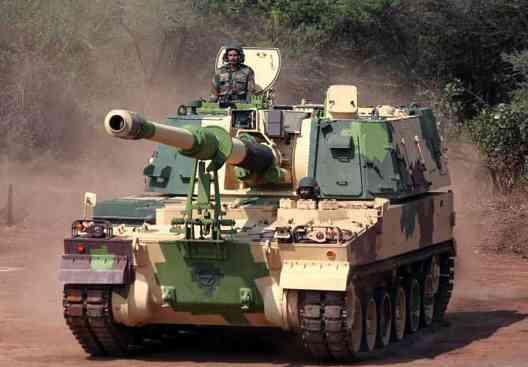
systems, transport aircrafts, light combat helicopters (LCHs), radars and many other items to fulfil the needs of our Defence Services. A new category of capital procurement ‘Buy {Indian-IDDM (Indigenously Designed, Developed and Manufactured)}’ has been introduced in Defence Procurement Procedure (DPP)-2016 to promote indigenous design and development of defence equipment. It has been accorded topmost priority for procurement of capital equipment.
The ‘Make’ Procedure of capital procurement has
been simplified. There is a provision for funding of 90% of development cost by the Government to Indian industry under Make-I category. In addition, there are specific reservations for MSMEs under the ‘Make’ procedure. Separate procedure for ‘Make-II’ category (industry funded) has been notified under DPP to encourage indigenous development and manufacture of defence equipment. Number of industry friendly provisions such as relaxation of eligibility criterion, minimal documentation, provision for considering proposals suggested by industry/ individual etc. have been introduced in this procedure. So far, 49 projects relating to Army, Navy & Air Force, have been accorded ‘Approval in Principle’, valuing about Rs. 30,000 crores. An innovation ecosystem for Defence titled Innovations for Defence Excellence (iDEX) has been launched in April 2018. iDEX is aimed at creation of an ecosystem to foster innovation and technology development in Defence and Aerospace by engaging Industries including MSMEs, Start-ups, Individual Innovators, R&D institutes and Academia and provide them grants/ funding and other support to carry out R&D which has potential for future adoption for Indian defence and aerospace needs. Under the iDEX scheme, a maximum of Rs 1.5 crore funding is available to a participant for development of a prototype. More than 700 start-ups participated in 18 problem statements pertaining to National Defence requirements, launched under 3 rounds of Defence India Start-up Challenges (DISC). 58 winners were announced after rigorous evaluation of applications by the High-Powered Selection Committees. Contracts have already been signed with several winners followed by release of first tranches and second tranche is also being released for some cases for prototype/ technology development.
In Feb 2018, Government decided to establish two defence industrial corridors to serve as an engine of economic development and growth of defence industrial base in the country. They span across Chennai, Hosur, Coimbatore, Salem and Tiruchirappalli in Tamil Nadu and across Aligarh, Agra, Jhansi, Kanpur, Chitrakoot and Lucknow in Uttar Pradesh (UP). About Rs. 880 crores in UP Corridor and Rs. 800 crores in TN corridor have already been invested. An indigenization portal namely SRIJAN DEFENCE has been launched on 14.08.2020
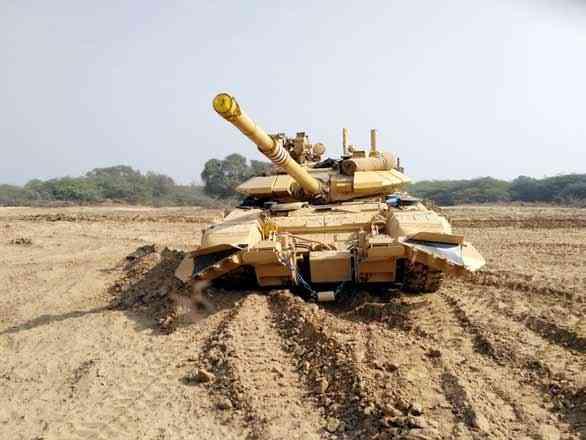

for DPSUs/OFB/Services with an industry interface to provide development support to MSMEs/Startups/Industry for import substitution Defence EXIM portal has been created for enhancing ease of doing business and to streamline Export authorisation procedures. Government has notified the ‘Strategic Partnership (SP)’ Model in May 2017, which envisages establishment of long-term strategic partnerships with Indian entities through a transparent and competitive process, wherein they would tie up with global Original Equipment Manufacturers (OEMs) to seek technology transfers to set up domestic manufacturing infrastructure and supply chains.
Government has notified a ‘Policy for indigenisation of components and spares used in Defence Platforms’ in March 2019 with the objective to create an industry ecosystem which is able to indigenize the imported components (including alloys & special materials) and subassemblies for defence equipment and platform manufactured in India. An Inter-Governmental Agreement (IGA) on “Mutual Cooperation in Joint Manufacturing of Spares, Components, Aggregates and other material related to Russian/Soviet Origin Arms and Defence Equipment” was signed during the 20th India-Russia Bilateral Summit in Sep 2019. The objective of the IGA is to enhance the After Sales Support and operational availability of Russian origin equipment currently in service in Indian Armed Forces by organizing production of spares and components in the territory of India by Indian Industry by way of creation of Joint Ventures/Partnership with Russian Original Equipment

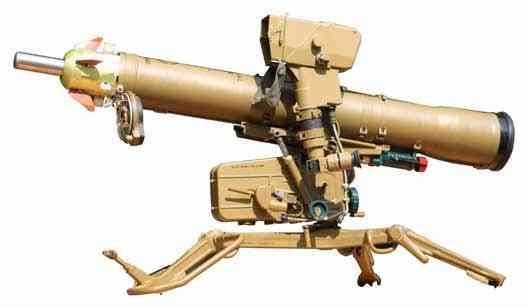
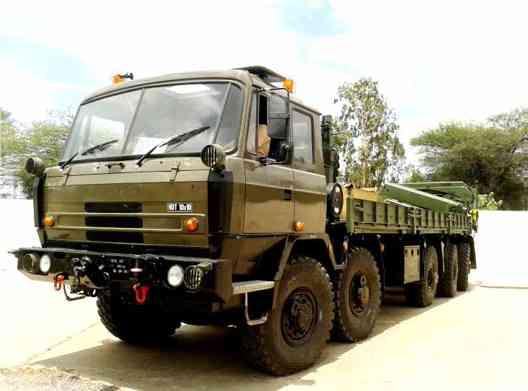
Manufacturers (OEMs) under the framework of the “Make in India” initiative.
Department of Defence Production has notified 24 items under the latest Public Procurement Order 2017 notified by Department for Promotion of Industry and Internal Trade (DPIIT), for which there is local capacity and competition and procurement of these items shall be done from local suppliers only irrespective of the purchase value. FDI Policy has been revised in the year 2016
US and Israel Flight Tested Arrow 2 Weapon System
United States and Israel have successfully completed a Flight Test of the Arrow 2 Weapon System. Israel Defense Minister Benny Gantz said, our ‘elite technological unit’ ensures that we will always be one step ahead of our enemies.”
The Israel Missile Defense Organization (IMDO), of the Directorate of Defense and accordingly, FDI is allowed under automatic route upto 49% and beyond 49% through Government route wherever it is likely to result in access to modern technology or for other reasons to be recorded. So far, FDI inflows of over Rs 3450 crores have been reported in Defence and Aerospace sector. Defence Investor Cell has been created in Feb-2018 in the Ministry to provide all necessary information including addressing queries related to investment opportunities, procedures and regulatory requirements for investment in the sector.
Defence Products list requiring Industrial Licences has been rationalised and manufacture of most of parts or components does not require Industrial License. Research and Development (DDR&D), in the Israel Ministry of Defense, together with the American Missile Defense Agency (MDA), and the Israeli Air Force (IAF), have completed a successful test of the Arrow-2 weapon system overnight (12.8), at 11:45 p.m. The test was led by Israel Aerospace Industries (IAI) and conducted at a site located in central Israel. The initial validity of the Industrial Licence granted under the IDR Act has been increased from 03 years to 15 years with a provision to further extend it by 03 years on a case-to-case basis. After opening up of the Defence Industry Sector for private Sector participation in 2001, government has issued 488
Throughout the test, the Arrow-2 system successfully engaged a Sparrow target missile, which simulates a long-range surfaceto-surface missile. The campaign was conducted in accordance to the defense establishment’s plans.
Defense Minister, “Israel must face challenges both near and far, and our ‘elite technological unit’ led by the DDR&D, IAI, and additional defense industries, ensures that we will always be one step ahead of our enemies, and that we will defend Israeli skies from any threat.”
The joint Israeli - American test reflects the partnership and friendship between the two countries as well as the deep commitment of the licenses till 10th Sept, 2020 for manufacture of a wide range of defence items – like EW Systems, Radars, Missiles, Body Armour, Small Arms and their ammunition, Naval Warships, UAVs, Artillery Guns, Armoured Vehicles, Helicopters, Aircrafts, etc. to Indian companies under Industries (Development & United States to the safety of the citizens of Israel. We will continue to work together to strengthen the capabilities of the defense establishment in the air, land and sea, as well as in cyberspace.
During the test, the updated capabilities of the Arrow system to contend with current and future threats, were validated. The interception was conducted by IAF service members together with engineers from the institutions involved in the system’s development. The various layers of Israel’s air defense mechanism were employed in this test, in order to ensure their readiness and efficacy in

operational scenarios. Regulation) Act, 1951 and Arms Act, 1959.” These industries are spread across various parts of the country.
This information was given by Minister of State for Defence Shripad Naik in a written reply to Dr Vinay P Sahasrabuddhe in Rajya Sabha.











